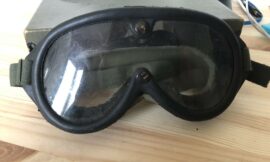The Glock series of pistols, designed and manufactured by Glock Ges.m.b.H. of Austria, have become some of the most popular and widely used handguns in the world since their introduction in the early 1980s. Known for their reliability, durability, and innovative design, Glocks are favored by law enforcement agencies, military personnel, and civilian shooters alike. Here’s an in-depth look at the history, design features, models, and impact of Glock pistols.
Historical Background
The origins of Glock pistols trace back to the late 1970s when the Austrian military sought a new standard-issue sidearm. Gaston Glock, an engineer with no prior experience in firearms design, took on the challenge and developed a revolutionary pistol that met the Austrian military’s stringent requirements.
Key Developments
- 1980: Glock starts designing the new pistol.
- 1982: The Glock 17, named for being Gaston Glock’s 17th patent, is introduced and adopted by the Austrian military as the P80.
- 1983: The Glock 17 is marketed internationally and quickly gains a reputation for reliability and innovative features.
Design and Features
The Glock pistol’s design is characterized by several key features that distinguish it from other handguns:
Polymer Frame
- Material: The Glock pistol was one of the first to use a high-strength polymer frame, reducing weight and making it more resistant to corrosion.
- Durability: The polymer frame contributes to the pistol’s overall durability and ease of maintenance.
Safe Action System
- Trigger Safety: The Glock’s Safe Action System includes three passive, independently operating mechanical safeties built into the fire control system. This ensures the pistol is safe to carry and handle but ready to fire when needed.
- Striker-Fired Mechanism: Unlike traditional hammer-fired pistols, Glock uses a striker-fired mechanism, simplifying the design and operation.
Simplicity and Reliability
- Parts and Maintenance: Glock pistols have fewer parts than many other handguns, making them easier to maintain and more reliable in adverse conditions.
- Reputation: The design has earned a reputation for reliability, withstanding extreme conditions and high round counts without failure.
Ergonomics
- Grip Design: The Glock’s grip angle and design provide a natural point of aim and comfortable handling.
- Modularity: Newer generations feature modular backstraps, allowing users to customize the grip size to fit their hand.
Models and Variants
Glock offers a wide range of models to suit different needs, from full-sized duty pistols to compact concealed carry options. Some of the most notable models include:
Glock 17
- Full-Size: The original and most widely recognized model, designed for military and law enforcement use.
- Caliber: 9mm.
Glock 19
- Compact: A slightly smaller version of the Glock 17, popular for both duty and concealed carry.
- Caliber: 9mm.
Glock 22
- Full-Size: Designed for law enforcement, chambered in .40 S&W.
- Versatility: Balances power and capacity, widely adopted by police forces.
Glock 26
- Subcompact: Designed for concealed carry, offering a smaller, more concealable profile.
- Caliber: 9mm.
Glock 43
- Single-Stack: Slimmer design for concealed carry, holding fewer rounds but offering easier concealability.
- Caliber: 9mm.
Glock 21
- Full-Size: Chambered in .45 ACP, providing a larger caliber option with a substantial magazine capacity.
Impact and Influence
The introduction of Glock pistols has had a significant impact on the firearms industry:
Law Enforcement and Military Adoption
- Global Use: Glocks are used by military and law enforcement agencies worldwide, prized for their reliability and ease of use.
- Standard Issue: Many police departments and military units have adopted Glock pistols as their standard sidearm.
Civilian Market
- Concealed Carry: Glock’s compact and subcompact models are popular choices for civilian concealed carry.
- Competitive Shooting: The accuracy and reliability of Glock pistols have made them favorites in various shooting sports and competitions.
Innovation and Trends
- Polymer Framed Pistols: Glock’s success with polymer frames has influenced other manufacturers to adopt similar designs.
- Striker-Fired Systems: The striker-fired mechanism has become more common in modern handguns, thanks to Glock’s pioneering work.
Conclusion
Glock pistols have revolutionized the firearms industry with their innovative design, reliability, and versatility. From their introduction in the early 1980s to their widespread adoption today, Glock handguns have set a new standard in the world of pistols. Whether for law enforcement, military, or civilian use, Glock’s commitment to quality and performance continues to make their pistols some of the most trusted and respected firearms available.


